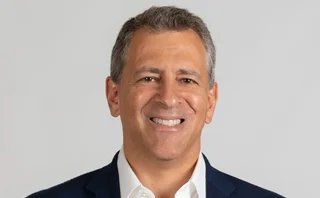
Newcomer of the year, Asia: BPI Financial Group
Energy Risk Asia Awards 2020: Newcomer adds liquidity, brings first-timers to derivatives and gains 20% share of key market

This year’s extreme price volatility made commodities markets tremendously challenging, especially for start-ups. But BPI Financial Group, winner of this year’s Energy Risk Asia newcomer award, not only survived the Covid-19 storm but thrived, bringing additional liquidity to the market and introducing new firms to risk management using derivatives for the first time.
A derivatives financial services provider in its third year, BPI Financial Group operates across a range of commodities including base and precious metals, bulk commodities, energy, freight and foreign exchange markets. Its unusually broad offering includes over-the-counter broking, global clearing services, emerging market access products and hedging services. Within three years of commencing business, its clearing business has garnered customer funds of over $250 million and more than 20% market share in cleared international iron ore derivatives.
“BPI Financial is a one-stop shop, which saves customers the hassle of multiple brokerage relationships,” says Kenny Mah, chief executive officer. “In terms of customer value, trades can clear faster and it helps reduce transaction costs by bundling brokerage and clearing fees together.”
While the firm has gained some clients from incumbent participants, it has also brought new clients to the market. This has required educating firms, such as steel mills, about the benefits of hedging. As well as teaming with exchanges to run educational programmes, BPI Financial Group engages deeply with firms to understand their needs, says Mah. “It’s not just about explaining the commercial benefits of hedging, it’s about building trust,” he says. “We become a partner to our clients, really taking time to understand their business so we can tailor solutions.”
This ability to guide clients is one of the firm’s biggest differentiators, believes Mah. “Being a new player, we need to stand out as adding value for clients. We understand the client and their risk profile,” he says.
Clients certainly agree. “BPI team has worked tirelessly collaborating with our senior management, treasury and marketing teams to ideate, explore and develop innovative hedging solutions,” says the head of treasury at a leading iron ore mining firm. “Not only has BPI managed to convey the benefits of hedging to internal stakeholders, they have helped elevate the understanding of commodity hedging through meetings and training sessions in Australia and Singapore,” he adds.
Its offering also includes access to emerging market products that allow clients to manage their commodity exposures. Using such products, international customers can manage arbitraging strategies in one book and enjoy reduced FX risk, faster trade execution through electronic market access and greater tax efficiency.
Adding further to its one-shop offering, BPI Financial can also help clients with funding requirements. “We’re able to use physical commodities to augment their collateral with BPI Financial should they need to,” Mah says.
This is particularly useful for firms that, for example, fix a cargo outside of banking hours and don’t have sufficient funds in their account to execute a hedge there and then. “We understand firms don’t want to wait overnight as the markets might move,” says Mah.
The robustness of BPI Financial’s business model was certainly tested in April this year when oil prices turned negative. As West Texas Intermediate futures at the CME plunged to minus $40 a barrel on April 20, some firms booked client losses of tens of millions of dollars and others found their electronic systems didn’t function properly in a negative price environment. However, BPI Financial, whose clients held significant long positions, managed not only to avoid financial losses for its clients, but even to eliminate margin calls.
“This is because we monitor our clients’ positions on a near real-time basis, so in the run-up to this – and the volatility really started at the start of March – we had the necessary conversations while there was still a buffer in place,” says Fan Songhua, chief commercial officer.
By walking clients through various scenarios and the impact they would have on their portfolio, the broker then encouraged them to take appropriate action, such as topping up funding, adding options structures for protection or closing out. “It meant that not a single day of margin call was required,” adds Songhua.
Only users who have a paid subscription or are part of a corporate subscription are able to print or copy content.
To access these options, along with all other subscription benefits, please contact info@risk.net or view our subscription options here: http://subscriptions.risk.net/subscribe
You are currently unable to print this content. Please contact info@risk.net to find out more.
You are currently unable to copy this content. Please contact info@risk.net to find out more.
Copyright Infopro Digital Limited. All rights reserved.
As outlined in our terms and conditions, https://www.infopro-digital.com/terms-and-conditions/subscriptions/ (point 2.4), printing is limited to a single copy.
If you would like to purchase additional rights please email info@risk.net
Copyright Infopro Digital Limited. All rights reserved.
You may share this content using our article tools. As outlined in our terms and conditions, https://www.infopro-digital.com/terms-and-conditions/subscriptions/ (clause 2.4), an Authorised User may only make one copy of the materials for their own personal use. You must also comply with the restrictions in clause 2.5.
If you would like to purchase additional rights please email info@risk.net
More on Commodities
Energy Risk Asia Awards 2025: The winners
Winning firms showcase the value of prudent risk management amid challenging market conditions
Data and analytics firm of the year: LSEG Data & Analytics
Energy Risk Awards 2025: Firm’s vast datasets and unique analytics deliver actionable insights into energy transition trends
OTC trading platform of the year: AEGIS Markets
Energy Risk Awards 2025: Hedging platform enhances offering to support traders and dealers in unpredictable times
Electricity house of the year: Natixis CIB
Energy Risk Awards 2025: Bank launches raft of innovative deals across entire electricity supply chain
Voluntary carbon markets house of the year: SCB Environmental Markets
Energy Risk Awards 2025: Environmental specialist amplifies its commitment to the VCM
Sustainable fuels house of the year: Anew Climate
Energy Risk awards 2025: Environmental firm guides clients through regulatory flux
Weather house of the year: Parameter Climate
Energy Risk Awards 2025: Advisory firm takes unique approach to scale weather derivatives markets
Hedging advisory firm of the year: AEGIS Hedging
Energy Risk Awards 2025: Advisory firm’s advanced tech offers clients enhanced clarity in volatile times








